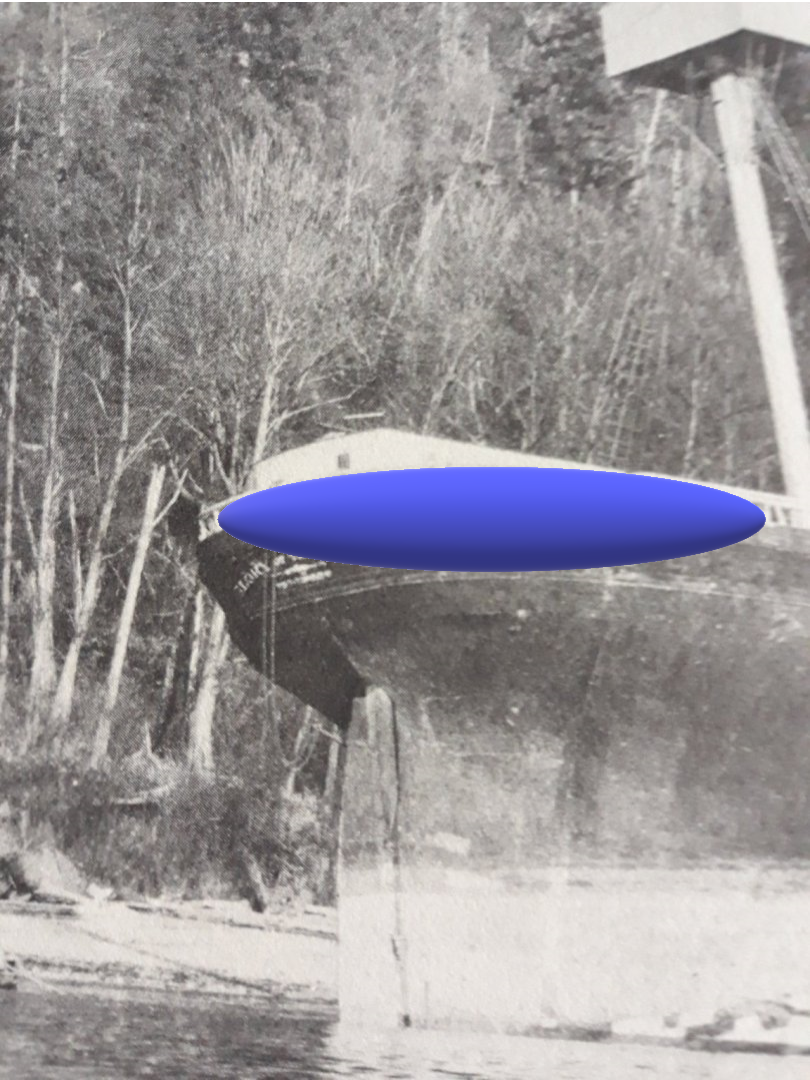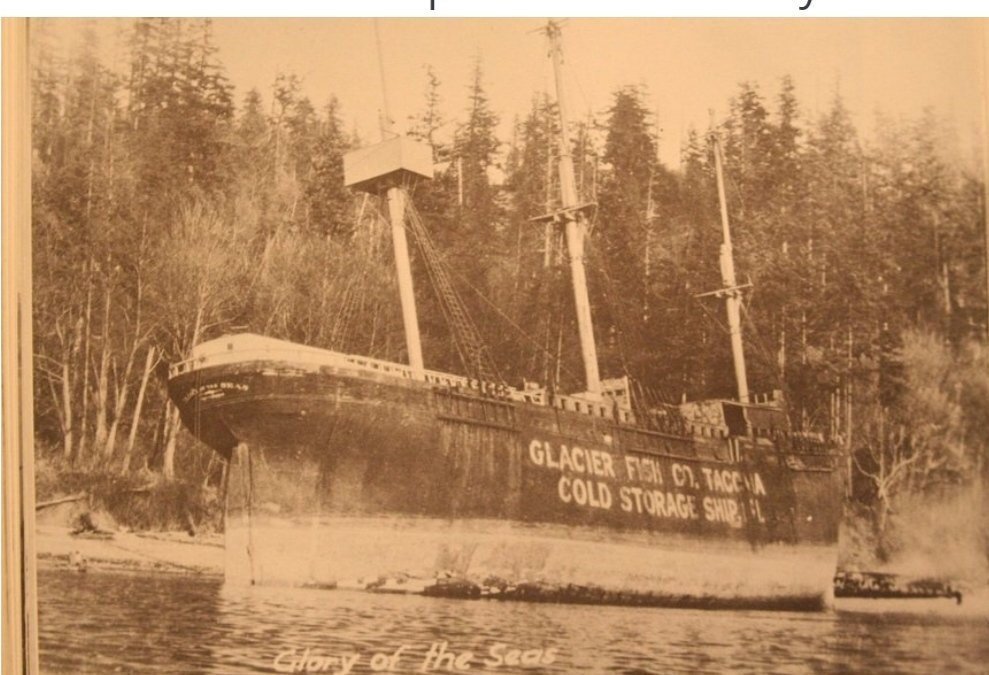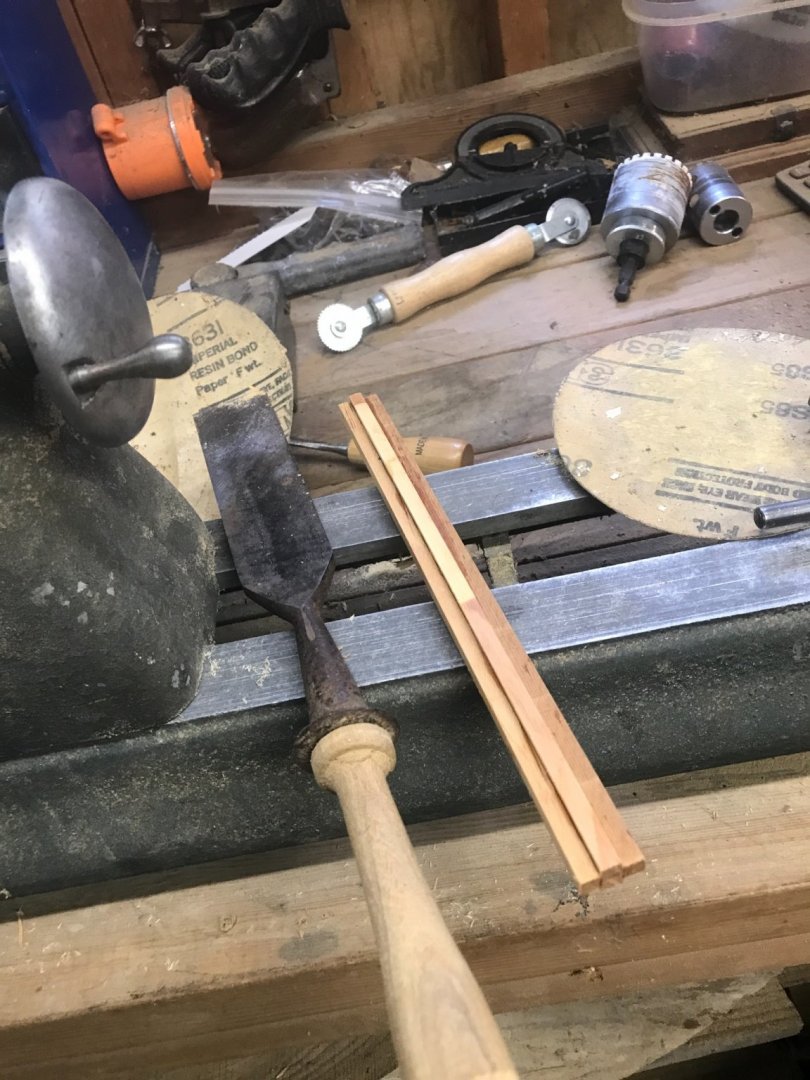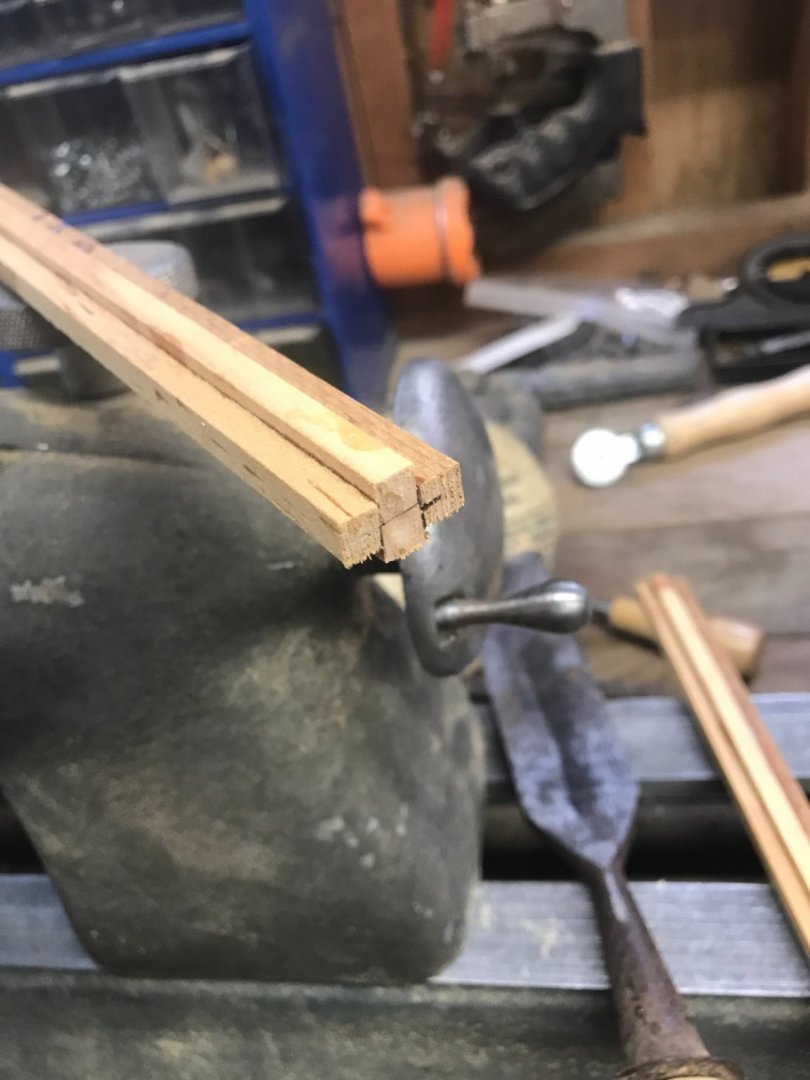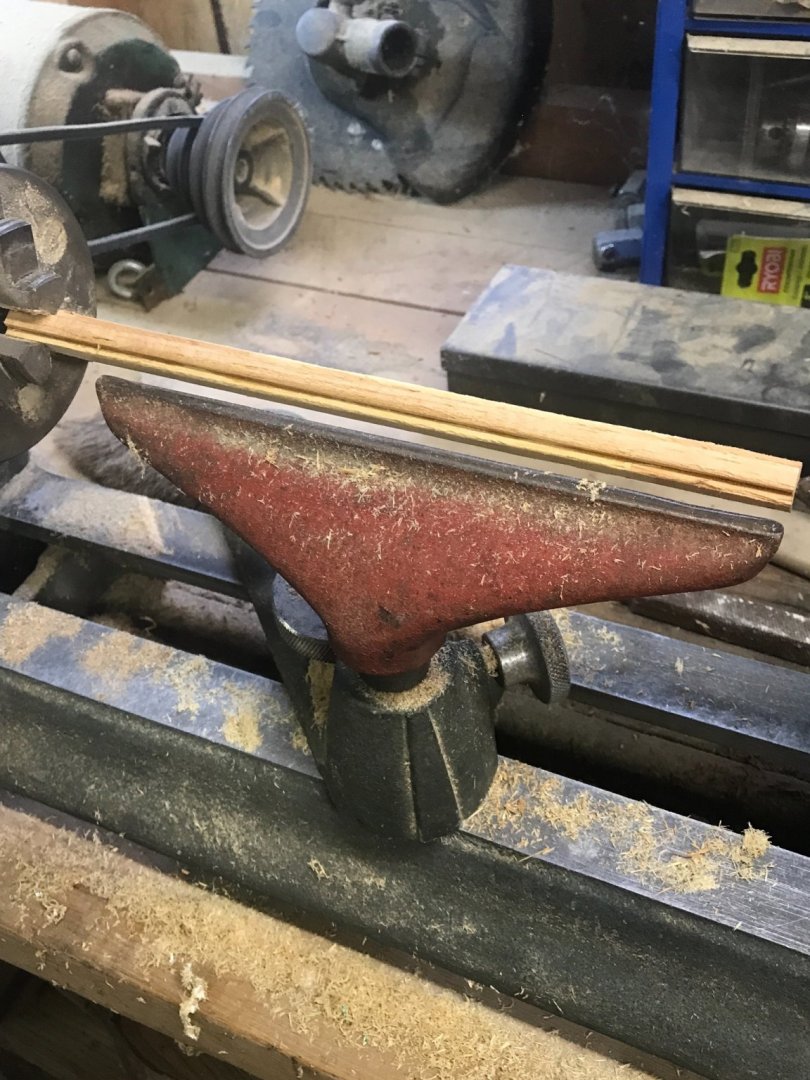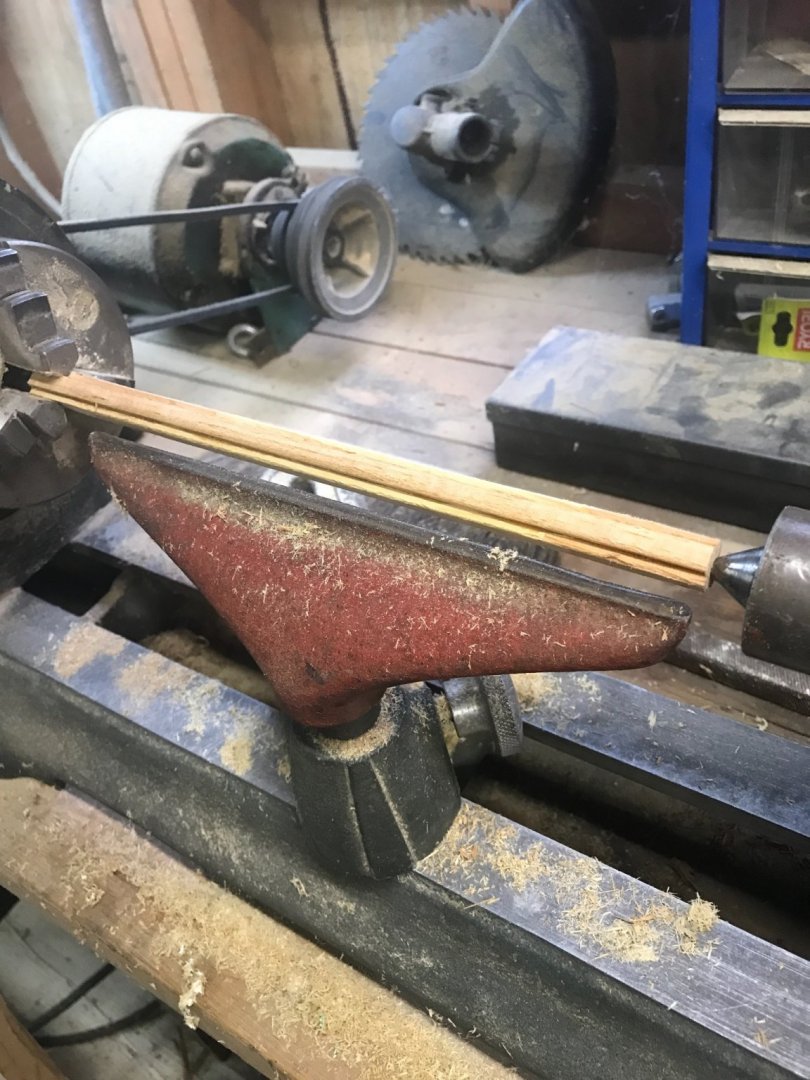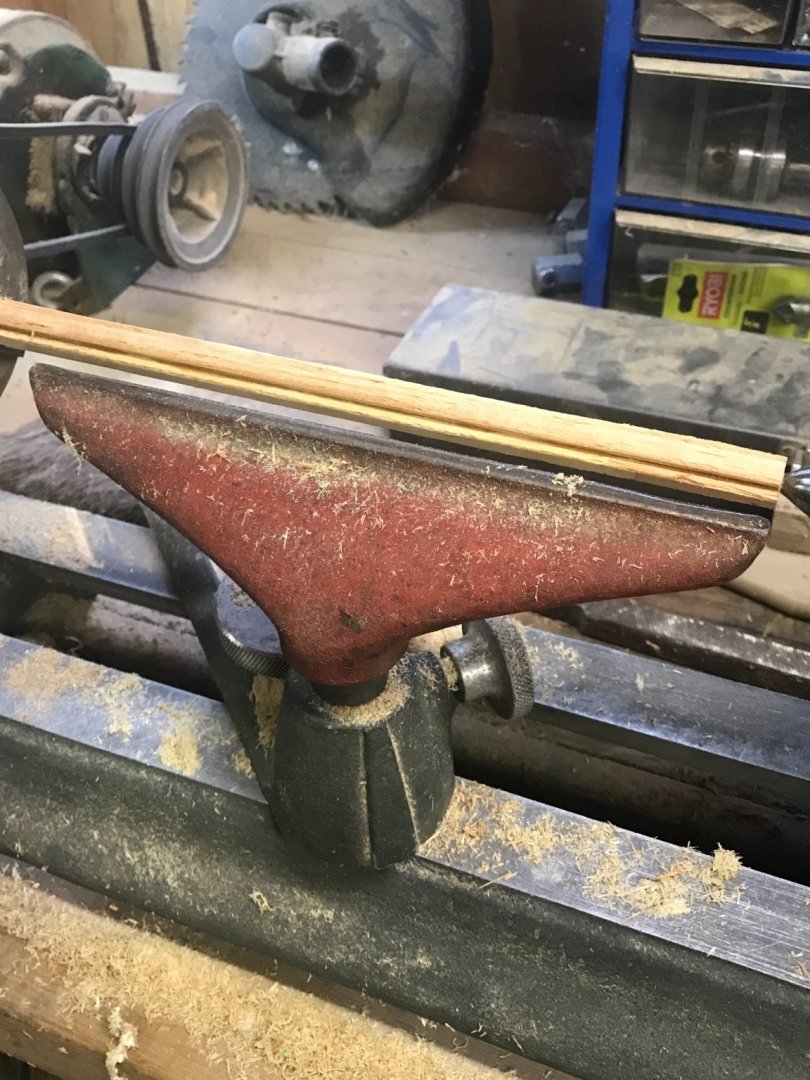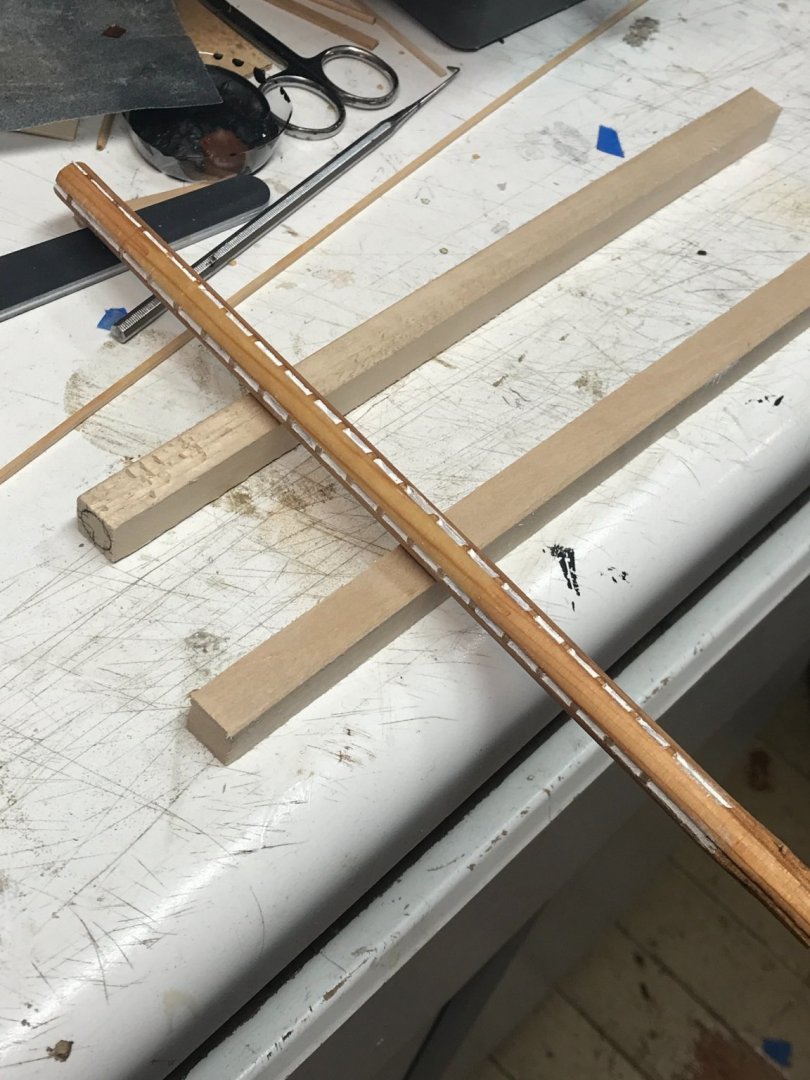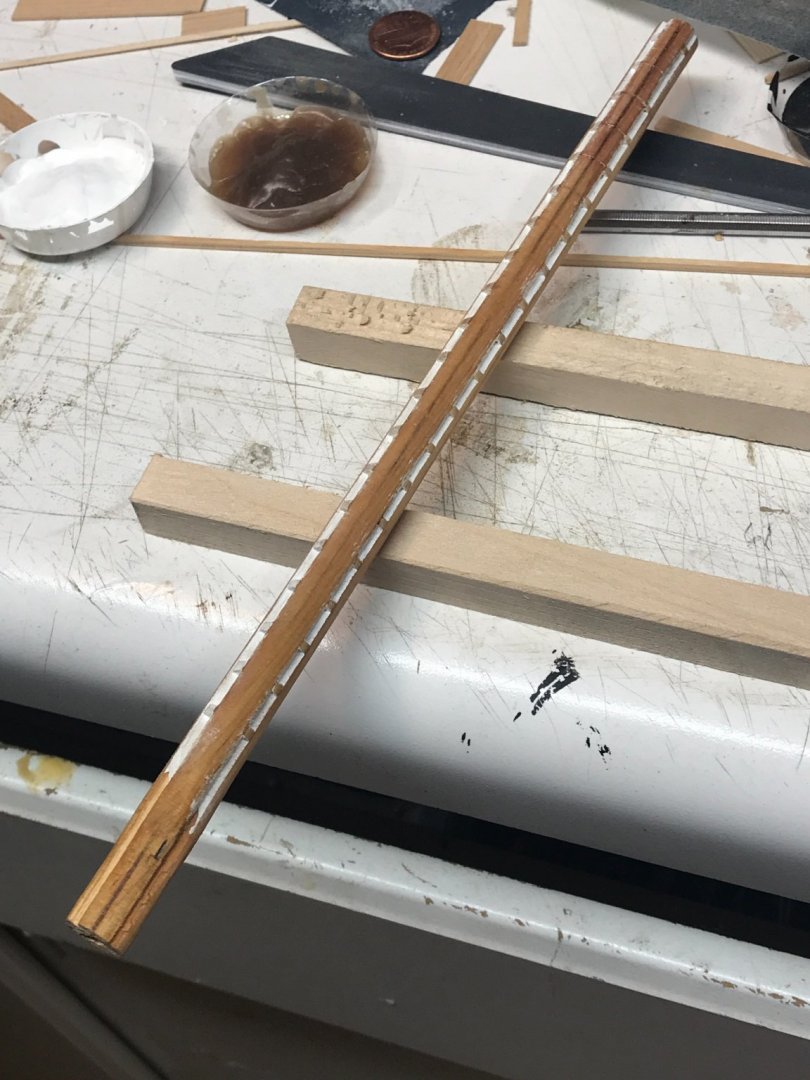-
Posts
5,504 -
Joined
-
Last visited
Content Type
Profiles
Forums
Gallery
Events
Everything posted by rwiederrich
-
Well Pat, I can correct the mast issue…….but the other issues are what they are. With that said, it was the idea of making a true to reality hull of Glory…… and that was the original intent. These minor(I call them minor), elements are not deal breakers in the least. Only true Glory geeks would make them so, and even then it’s not the end of the world. Thanks for the continued confidence. Rob
- 3,560 replies
-
- clipper
- hull model
-
(and 2 more)
Tagged with:
-
I'm glad he approves...even though I have managed to reproduce some blatant errors Namely the carriage house aft reduction and the forecastle height discrepancy. I made these egregious mistakes, even after having all the correct information right in front of me. My anxiousness to get her built, violated several of the greatest modelers tenants. Patience and accuracy. Today I re-evaluated my composite mast construction technique and, again, I think I am going to change the construction process up again. I'm going to work from dowel material and use my table router to remove the chapeling material. Turning the mast on the lather from glued square stock resulted in slightly off center round masts. It is slight and thusly is caused the 4 chapeling segments to be slightly unsymmetrical. It is hardly noticeable, but to me it is unacceptable. This is what I referred too as slight blemishes, in an earlier post. I'll set up a jig on my router table and cleanly cut even grooves. This is how I did it on the masts for my Donald McKay clipper...but I used a home made mini table saw then. This go around I will use a nice router bit. Then as before...add the chapeling spacers and again, paint, and sand till clean and smooth. Things will run truer on the lathe this time....resulting in much nicer composite masts. IMV. Rob
- 3,560 replies
-
- clipper
- hull model
-
(and 2 more)
Tagged with:
-
Thanks Rich. I haven’t been in contact with Mike for a while. I hope he enjoys the images you sent. Rob
- 3,560 replies
-
- clipper
- hull model
-
(and 2 more)
Tagged with:
-
These curvilinear sterns still don’t match Glory’s images. Plus I think we are missing the greatest comparative discrepancy. Glory was a full bodied MEDIUM clipper. All of these examples presented are from extreme clippers. An entirely different MODEL of clipper. Requiring completely different structural considerations when wood was the primary building material. Something to think about. Rob
- 3,560 replies
-
- clipper
- hull model
-
(and 2 more)
Tagged with:
-
Well, if we look up the word Curvilinear. We will see that it means: Formed, bounded or characterized by curved lines. In essence, it is s subjective word. A word describing curved lines that are linear....(Together), but not straight. I see her curve as not a true spherical, but more oblate...where the apex of the fantail is the FLAT pole point and then it forms spherically as it terminates at the flat sides. I see why Duncan used the subjective term Curvilinear....the current vernacular or a looser translation would be...Roundish.... This all plays into the spectacular design parameters that McKay availed upon. His entry and exit designs were his *trade* secrets and since, apart from his two pares of sister clippers, Star of Empire/Chariot of Fame and Commodore Perry/Japan, he never reproduced exact duplicate designs. He kept improving, changing, experimenting. Circlic designs are far more robust. Rob
- 3,560 replies
-
- clipper
- hull model
-
(and 2 more)
Tagged with:
-
The lower angle is most advantageous because it aids in identifying the stern as more calendrical then abrupt with oblate edges. Clues, clues, clues help evaluate reality. Rob
- 3,560 replies
-
- clipper
- hull model
-
(and 2 more)
Tagged with:
-
This circle matrix is representative of a vertical circle under the stern......I wanted to use a visual to aid in identification of what distortion hides. Rob
- 3,560 replies
-
- clipper
- hull model
-
(and 2 more)
Tagged with:
-
Why I still reserve the right to think the stern is more round then oblate on its edges. I used a simple drawing program to illustrate the more circular stern and slightly flat on the central fantail. I used a circle templet and imposed it against the rail on the starboard side and it matches pretty close. Follow along the edge of templet and the edge of the rail and the edge of the planksheer.
- 3,560 replies
-
- clipper
- hull model
-
(and 2 more)
Tagged with:
-
Now that looks much better, that I can agree with. Could be even slightly rounded with that flatter fantail. Great job Rich. I like it. Rob(but who am I)
- 3,560 replies
-
- clipper
- hull model
-
(and 2 more)
Tagged with:
-
I agree about the carriage house curving to accommodate the curve of the hull. I made my carriage house curve, but not enough, and I didn’t make the roof follow the slight curve of the walls, so it gets unnoticed. However, that is where we part. The image of her on the beach shows clearly, if you follow her rail, that it slowly curves around her stern. Look closely….see her starboard rail curves slowly…….not abruptly as depicted, but slowly. Im still convinced she has a nearly round stern , slightly ablate at the fantail, or slightly “curvilinear”. Kinda Like what you depicted but far less extreme Sorry . Rob
- 3,560 replies
-
- clipper
- hull model
-
(and 2 more)
Tagged with:
-
They are not perfect, there are slight imperfections in the paint and turned surfaces. When it dries I’ll work it a bit more. Rob
- 3,560 replies
-
- clipper
- hull model
-
(and 2 more)
Tagged with:
-
I began the process of making my composite mast. First it must be clearly made known…..these masts are all experimental. If I like the end result , I’ll keep-em, if not I’ll remake them I began by gluing sections together and throwing them on the lathe. Next I added the spacers and finished sanded on the lathe. Then I painted the recesses and again back on the lathe for final sanding. I the put on some Danish oil and that is where I am currently. Still need to add the bands. These things are a lot of work. Not sure of the final look till banding. Remember these are not very big, just over 3/8” in diameter, or 7/16”ish. Rob
- 3,560 replies
-
- clipper
- hull model
-
(and 2 more)
Tagged with:
-
Some of my calculations for the masts have led me to an impasse. My original idea of cutting out the corner sections of a square piece of stock, turned out to be far less them acceptable. The ratio of blade depth for all passes to remove the material produced many unwanted *overcuts*. The depth of the blade and distance from the fence for this scale proved to be more then I wanted to re-engineer my equipment for. So I opted for an alternative. For the Fore and Main masts I will use the 1/8" scale, (Mizzen, 3/32") and then cut several pieces and glue them together to form the mast. I'll begin with cutting a main piece 3/4" wide by 1/4" wide, Length does not matter at this juncture. Then I will cut 2 pieces 1/4" square. Then by gluing the 2 1/4" pieces to the sides of the 3/4" piece, I will have created the needed *cross* that will be the basis of the mast. Then for the head stock portion, I will center punch and screw and glue a shank for the chuck to grab...and the other end I will simply center punch and press into the bearing tipped spindle in the tail stock of the lathe. Then all I need do is turn the mast to the appropriate scale diameter. I will then follow my original plan of cutting shims to fit at the appropriate distances in the recesses for the band supports. I'll mark those with pencil on the lathe at the scale 3ft increments. I'll follow that up with a coat of white paint in the recesses and then I'll replace the mast back in the lathe and do a final soft sanding to remove excess wood from the shims(Rounding them) and any paint on the exposed outer wood of the mast. This portion will be varnished or Tung oiled. I probably should have followed this method to begin with, but I wanted to see if the other method could be accomplished on my table saw. I'll probably turn a foot of composite glued mast on the lathe for each mast, so I have ample material left on each end to fit snugly in the hull and have enough material to carve the square portion of the lower mast that is within the doubling with the top mast. Once the proper length is established, I will band them. (That will be fun). then everything will get a coat of matt finish. Rob
- 3,560 replies
-
- clipper
- hull model
-
(and 2 more)
Tagged with:
-
Rich, is that the mast length from deck to top of doubling, or mast cap? Mike gives those dimensions in his second book. Rob
- 3,560 replies
-
- clipper
- hull model
-
(and 2 more)
Tagged with:
-
Been a little slow these last couple of days. Doing yard work cleaning up after a wind storm, just been busy with other things. I'm mapping out my lower mast structures so this work will take some time and there will be little to post about until I Mill down the right wood I want to use. Rob
- 3,560 replies
-
- clipper
- hull model
-
(and 2 more)
Tagged with:
-
Best part about these *new* observations/revelations is that they have little impact on the overall replication of what we have thusly accomplished. However, anyone who comes behind us will,(as suspected), have greater information. We are kinda like Mike when he began this entire adventure, so long ago. He was the trend setter...the tip of the spear, the point man....then we came along an rewrote the entire interpretation, that he spent decades formulating, and solidifying in 2 publications. Any minor dimensional questions can be attributed to model shipwright impressions and translation applications. Personally, I think our hull corrections and my structural representations outweigh any additional modifications future modelers might include in their representations. I would love to see your drawing of said corrections based upon known dimensions and your projected modifications....☺️ Rob
- 3,560 replies
-
- clipper
- hull model
-
(and 2 more)
Tagged with:
-
I took several looks and compared it with the photo of the boy on the boy house roof. These images were probably taken at the same time...during the same shoot. This is evidenced by the same stack of wood and ropes on the main cabin roof...they are in the same position and latitude. Now further evaluation shows that the captain's head is roughly the same level as the keel of the boat stored on the roof...skipping over to the other image you can deductively make out the location of the boats keel and it is clear the *Object* is far to high on the mast to be a useful place for any kind of bell. Plus...you would have to lean over or be on the edge of the roof (During inclement weather) to ring it. Very unpractical. Then when the stay sails are furled at the base of the stay, they would just be in the way. Further impracticality. Continued deduction by way of understanding the nature of what goes on at the foremast foot...you will know that the main topmast stay is most likely the shadow that Pat references as the oblique shadow. There are the blocks used for the stay sail downhauls...there are even a large group of *Hanks* visible on the downhaul. Notice the presence of secured rope in the image hanging from either the stay or a belay point (Most likely) for securing the stowed sail. There are far too many working components of the rigging in both of these images that might be the distorted reflection/shadows that we are viewing. In all likelihood the bell is stationed at the bow around the forecastle or aft by the wheel or aft cabin...generally where the watch would make his announcement notification on the bell for watch changes, sounding and the like. Rob
- 3,560 replies
-
- clipper
- hull model
-
(and 2 more)
Tagged with:
-
Riiight, that is why we apply a little deductive reasoning. To help us when nothing else points the way. One reason this build is so fun. Rob
- 3,560 replies
-
- clipper
- hull model
-
(and 2 more)
Tagged with:
-
By looking at the other image of the captain, you can see hardware affixed to the main stay. Could be that stuff. Rob
- 3,560 replies
-
- clipper
- hull model
-
(and 2 more)
Tagged with:
-
The shadow is confusing, but it is not only confusing it is also incorrectly placed. You have to go to the rooftop to sound the bell. Doesn’t seam right. Rob
- 3,560 replies
-
- clipper
- hull model
-
(and 2 more)
Tagged with:
-
Oh my gosh……..I’m so sorry, yes I did receive it. It is amazing. I so got caught up in my build I dropped the ball. please forgive me for forgetting. I’m a puts. It is great that the discussion focuses on this highly overlooked item. We can agree this is a fluid element I can’t find the bell you spoke of. Rob
- 3,560 replies
-
- clipper
- hull model
-
(and 2 more)
Tagged with:
-
Yeah, from the photos it appears the forecastle is at the same height as the long cabin, but Mike’s drawings show otherwise. Perception is everything and how much distortion are we really looking through and at? There is always something we either missed or perceived incorrectly. Rob
- 3,560 replies
-
- clipper
- hull model
-
(and 2 more)
Tagged with:
-
This image can be interpreted many ways, I chose to use wood painted white, those McKay used apparently iron on his Flying Fish clipper on her carriage house. Im simply making an artistic move. Rob
- 3,560 replies
-
- clipper
- hull model
-
(and 2 more)
Tagged with:
About us
Modelshipworld - Advancing Ship Modeling through Research
SSL Secured
Your security is important for us so this Website is SSL-Secured
NRG Mailing Address
Nautical Research Guild
237 South Lincoln Street
Westmont IL, 60559-1917
Model Ship World ® and the MSW logo are Registered Trademarks, and belong to the Nautical Research Guild (United States Patent and Trademark Office: No. 6,929,264 & No. 6,929,274, registered Dec. 20, 2022)
Helpful Links
About the NRG
If you enjoy building ship models that are historically accurate as well as beautiful, then The Nautical Research Guild (NRG) is just right for you.
The Guild is a non-profit educational organization whose mission is to “Advance Ship Modeling Through Research”. We provide support to our members in their efforts to raise the quality of their model ships.
The Nautical Research Guild has published our world-renowned quarterly magazine, The Nautical Research Journal, since 1955. The pages of the Journal are full of articles by accomplished ship modelers who show you how they create those exquisite details on their models, and by maritime historians who show you the correct details to build. The Journal is available in both print and digital editions. Go to the NRG web site (www.thenrg.org) to download a complimentary digital copy of the Journal. The NRG also publishes plan sets, books and compilations of back issues of the Journal and the former Ships in Scale and Model Ship Builder magazines.




